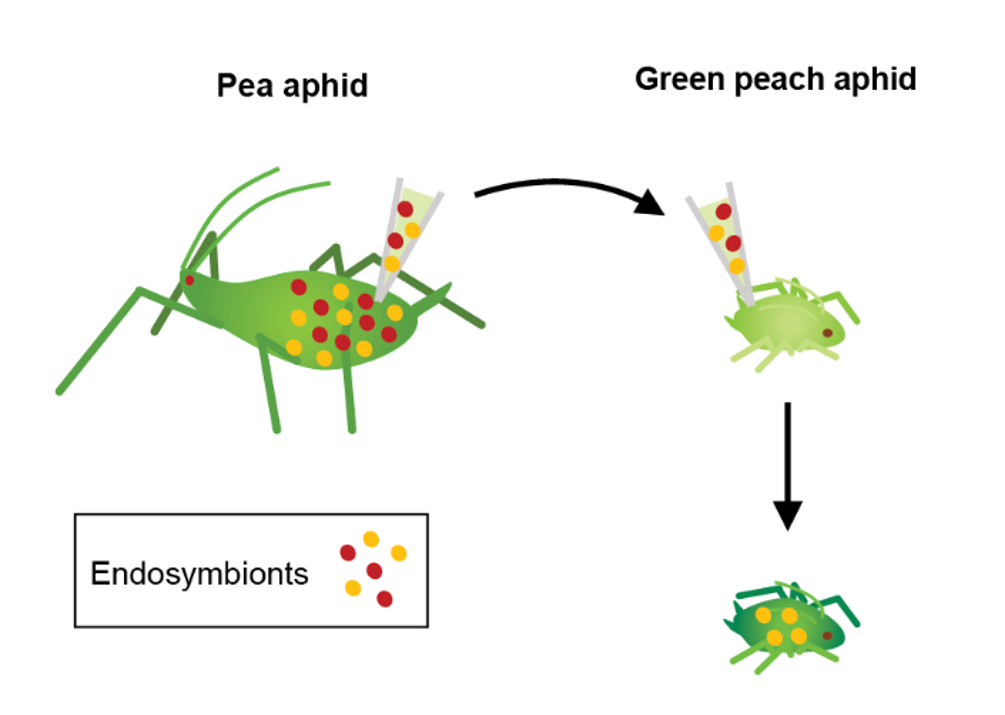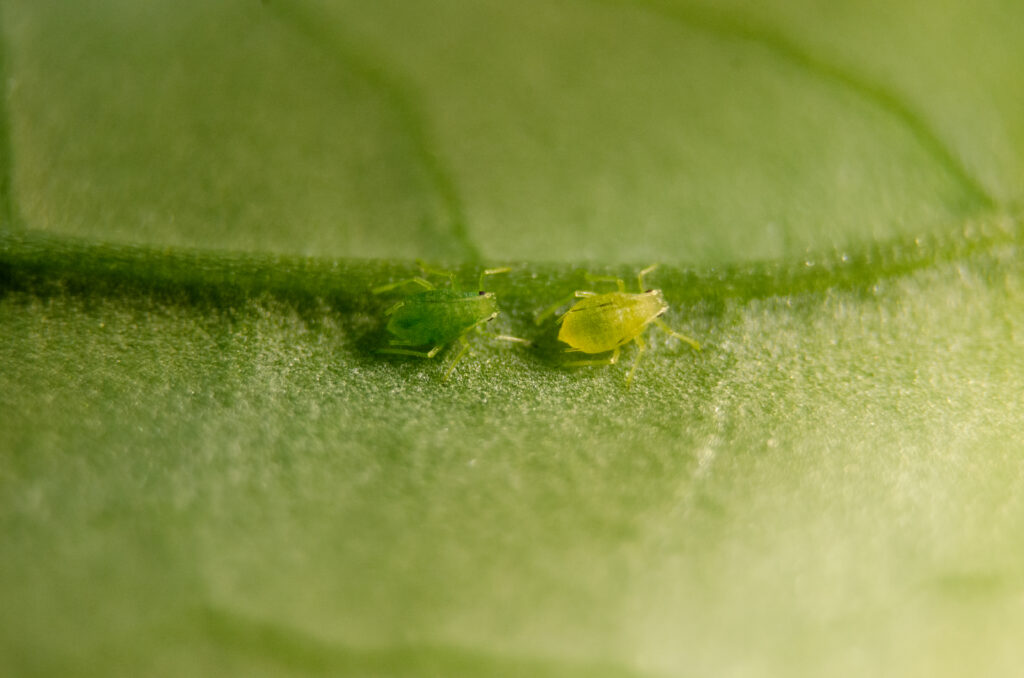If you’re an avid gardener or farmer, you might be familiar with the sight of aphids munching away on what was to be your harvest this year.
These tiny pests are a persistent problem, often causing significant financial losses. Worryingly, growing insecticide resistance in some species makes control all the more difficult and costly, emphasising the need for new management strategies.
This is why an innovative, environmentally friendly approach to pest control is being explored in a recent study from researchers at the University of Melbourne, as part of the Australian Grains Pest Innovation Program (AGPIP), supported by the Grains Research and Development Corporation.
Their solution? Tiny microbial bacteria known as endosymbionts.
Endosymbionts explainer
Endosymbionts are a type of bacteria that have co-evolved with insects over millions of years, and they can play a crucial role in their survival. Some endosymbionts can aid in nutrition, reproduction, and resistance to environmental stress while others induce fitness costs. These effects are what first inspired the idea of manipulating endosymbionts to help suppress pests.
One particular endosymbiont, known as Rickettsiella, is naturally carried by certain aphid species such as the pea aphid (Acyrthosiphon pisum) where it confers advantages such as protection against disease, but at a cost to the overall health of the aphid. Introducing endosymbionts like Rickettsiella to new aphid species that do not typically carry them may offer unexplored possibilities for pest control, depending on how they affect their new host.
The full potential of such technology for agriculture are still in development at this stage, but this research from the Pest & Environmental Adaptation Research Group (led by researchers Xinyue Gu & Perran Ross) is a first major step.
From pea to peach: how endosymbiont transfer works
The green peach aphid (Myzus persicae) is a highly significant agricultural pest with a host range of over 400 plant species and the ability to transmit damaging plant diseases. The difficulty in controlling this pest is further compounded by its widespread resistance to insecticides, underscoring the pressing need for alternative management approaches.
The technique of microinjection was employed to transfer Rickettsiella from the pea aphid into the green peach aphid, with the aim of uncovering potential effects that would suppress aphid populations or reduce virus transmission. If this is achieved, it could alter their population dynamics and potentially offer a new avenue for pest control.

Less than peachy: the impact of Rickettsiella
Rickettsiella caused two significant changes in the aphids after introduction to the now host. Firstly, it changed the green peach aphid’s colour from light to dark green, making the infected aphids easily distinguishable. Secondly, it substantially decreased the aphids’ overall fitness, resulting in a 50% decrease in both their fertility and lifespan. These findings have important implications for controlling aphid populations.

The colour difference between a Rickettsiella (+) (left) and Rickettsiella (-) (right) aphid. Photo courtesy of Lilia Jenkins
The researchers also sought to understand how the infection spread in the aphid populations. Spread of the endosymbiont was expected to be limited by the fitness costs (e.g. decreased lifespan), however transmission was surprisingly rapid, facilitated by the fact that infected aphids could pass the endosymbionts both to their offspring (horizontal transmission) and to other aphids that were feeding on the same plant (vertical transmission).
Further study is needed to determine the frequency of transmission outside of a laboratory setting, but combined horizontal and vertical transmission could potentially sustain a Rickettsiella infection naturally in a field environment, resulting in long term population effects.
Promising potential for pest management
Much more work is required to understand how these findings can be used in crop protection, but endosymbiont-based management strategies could potentially impact aphid population dynamics in novel, persistent ways.
The fitness cost and self-sustaining nature of Rickettsiella infection make it particularly promising for use in winter grain crops. By intentionally releasing Rickettsiella-infected aphids during the early stages of crop growth, the infection could quickly spread throughout the pest population. As the temperature increases, the ability of the infected aphids to reproduce would decline, resulting in a crash in the pest population.
Before implementation in the field, it will be crucial to ensure that using endosymbionts for pest control in agricultural settings doesn’t have any unintended consequences on the environment or food safety. Although it may take some time for this technology to become a reality, with chemical control options rapidly dwindling due to resistance and environmental concerns, exploring new approaches is more important than ever.
Acknowledgements
Authored by Lilia Jenkins, Perran Ross & Xinyue Gu.
To read more about the research undertaken by the Pest & Environmental Adaptation Research Group at the University of Melbourne, you can find the paper here.
This research is being undertaken as part of the Australian Grains Pest Innovation Program (AGPIP). AGPIP is a collaboration between the Pest & Environmental Adaptation Research Group at the University of Melbourne and Cesar Australia. The program is a co-investment by the Grains Research and Development Corporation (GRDC) and the University of Melbourne, together with in-kind contributions from all program partners.
Cover image: Photo by Lilia Jenkins, Cesar Australia.
